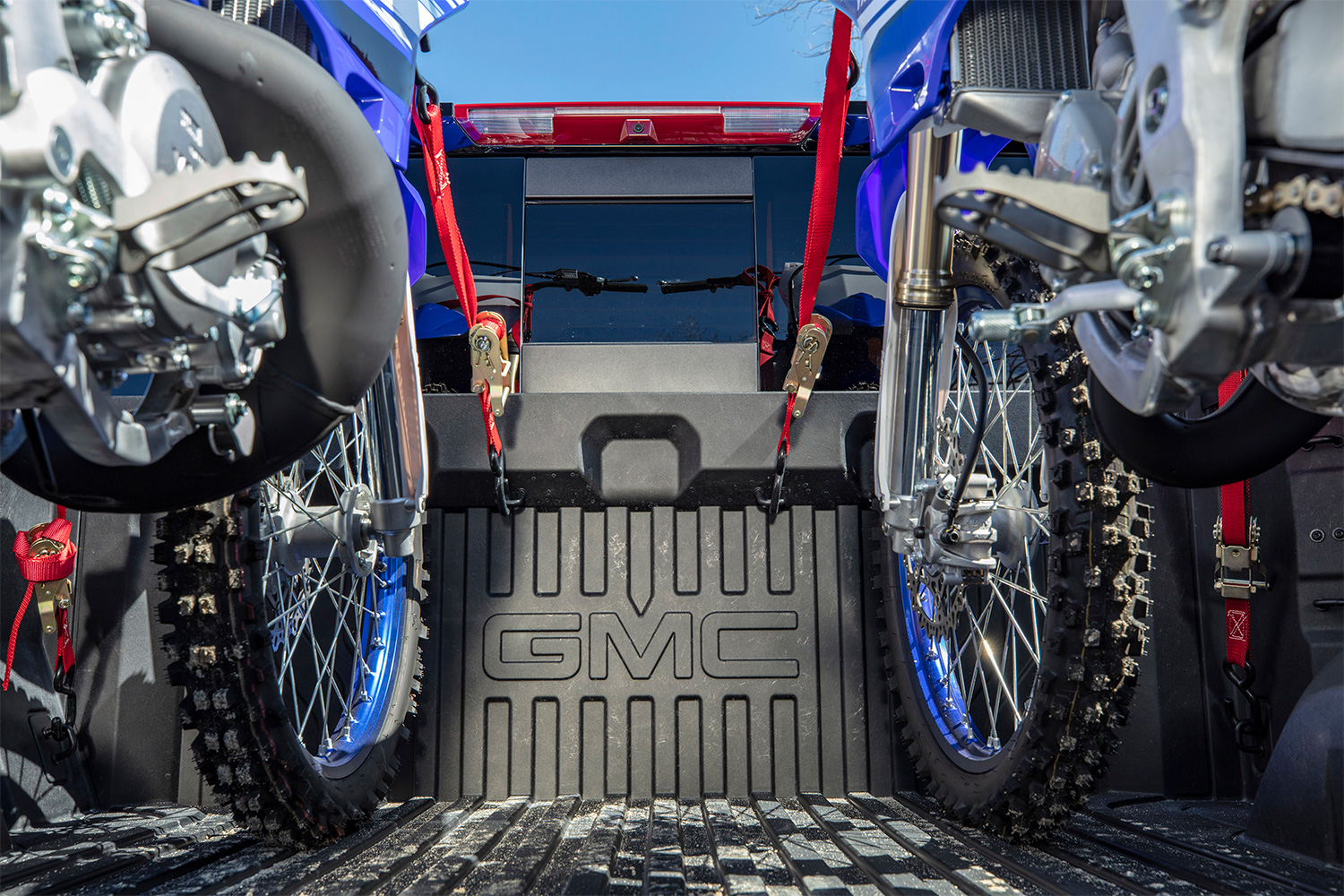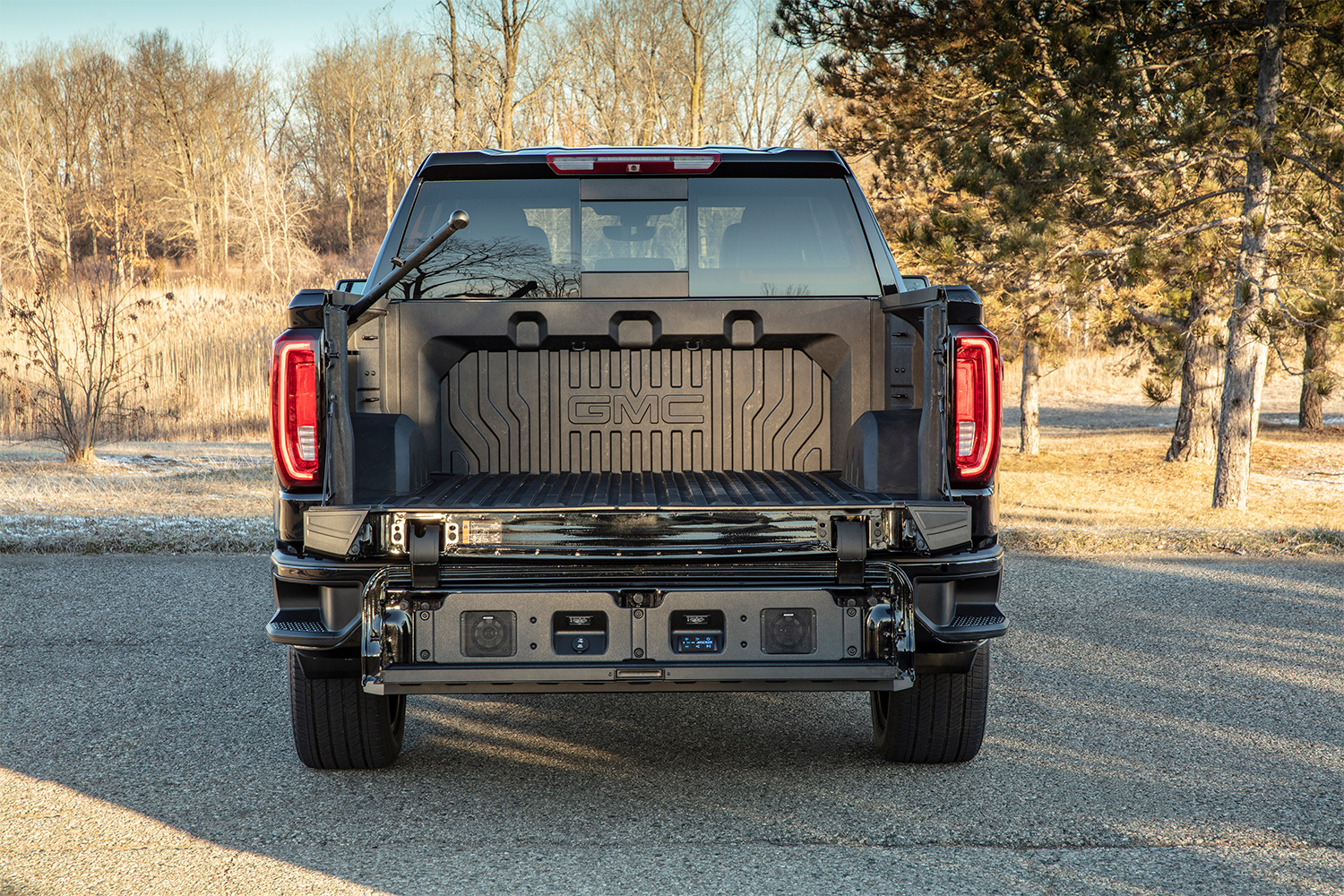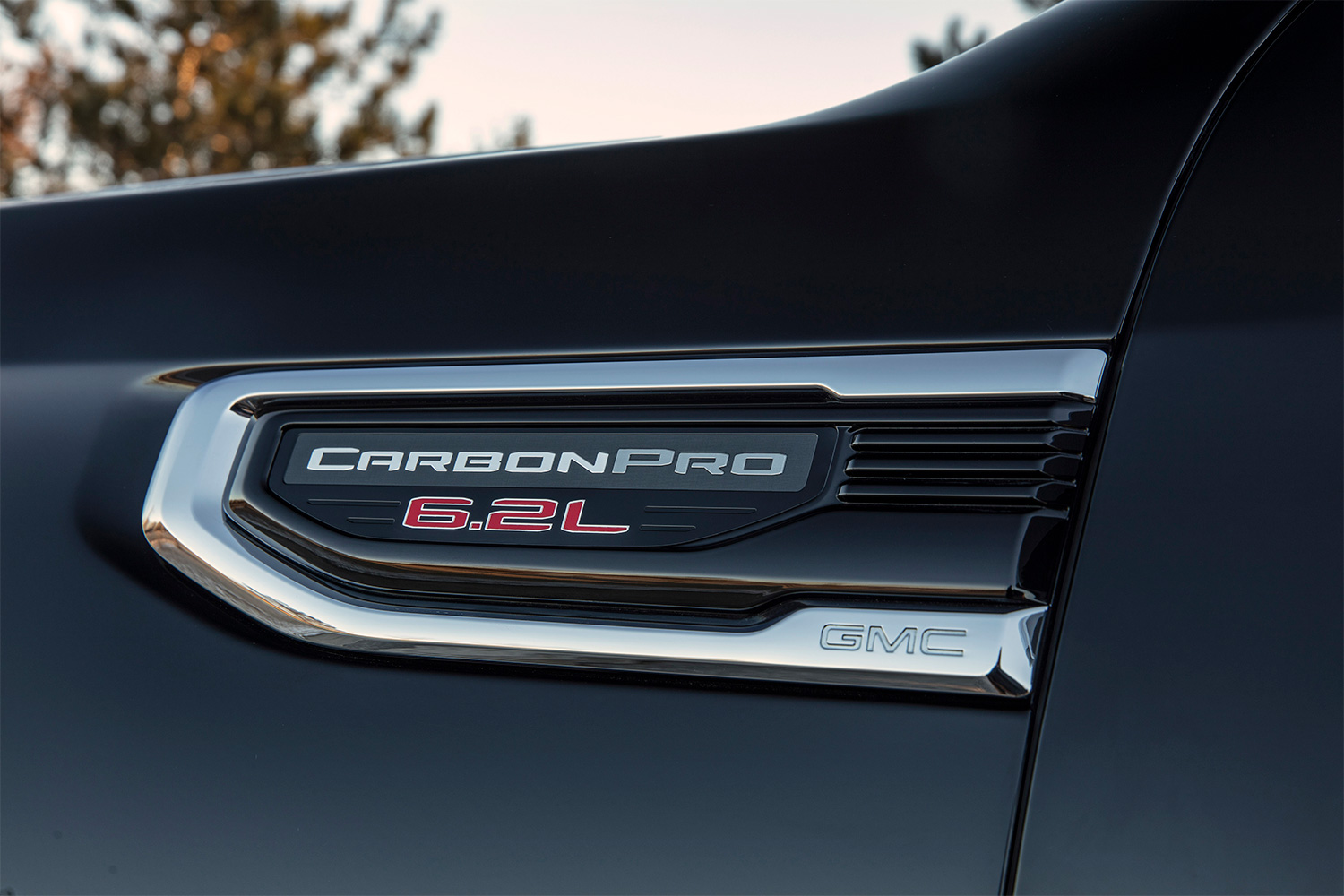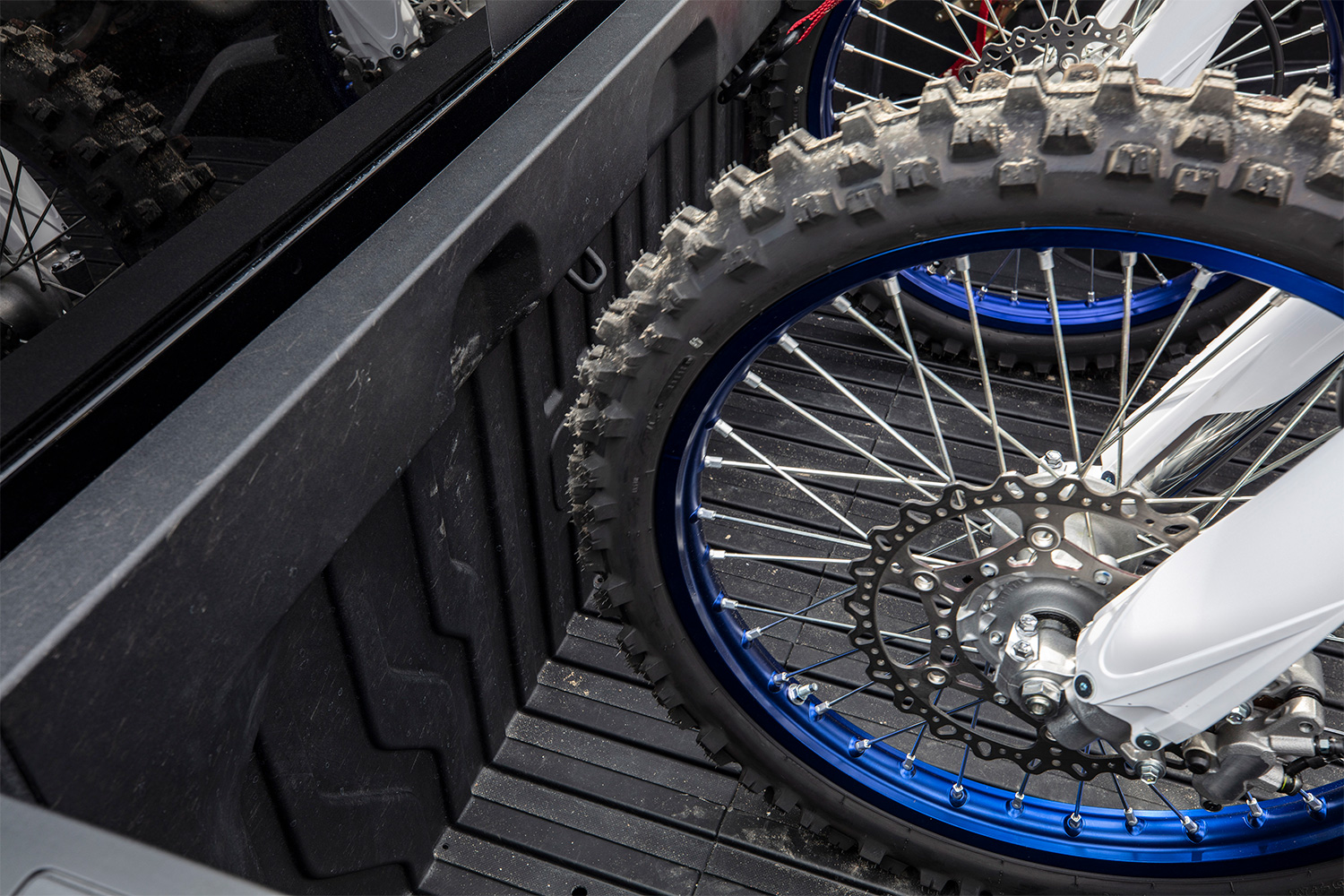
Pickup truck beds haven’t changed much in the last 100 years. They used to be made out of wood, but by the 1960s automakers had gone to all-steel beds for most trucks. Steel is tough enough for decades of use, but it’s also heavy. Plus, steel gets scratched and dented if you use a pickup truck for serious work. That fact gave rise to the bedliner industry, with plastic or urethane inserts and coatings to protect the steel from damage.
Things started to change a few years ago. To save weight, Honda began using a steel-reinforced composite polymer bed in the Ridgeline back in 2006. Ford went to an all-aluminum bed for the F-150 in 2015, but that material poses challenges because it’s easier to dent and puncture than plastic, and it’s more difficult to repair. However, the weight savings are absolutely necessary to keep pace with consumer demands for improved fuel economy.
GMC Chooses Carbon Fiber
The first thing to know about a carbon fiber bed is that there’s more than one kind of carbon fiber. When most people think about this material, they picture beautiful woven carbon fiber fabric encased in clear plastic. This is the stuff that gets molded into ultra-lightweight parts for sports and racing cars, but it’s fragile and certainly not suitable for a pickup truck bed. To make a bed that’s tough enough for the abuse that happens to working pickups, you need a different material.
“A lot of questions that I get are, carbon fibers break,” said Mark Voss, GMC engineering group manager. “You see race cars hit the wall and they shatter and fly apart. This is a more durable or ductile material, so it’s got much higher toughness. Basically about two times the toughness of a traditional composite.”
What Voss and his team came up with was a mix of a tough plastic reinforced with a random matrix of 1-inch lengths of individual carbon fiber strands. Because the fibers are scattered throughout the plastic thickly and randomly, the material is reinforced in every direction. The beautiful carbon fiber cloth you see on sports cars is easier to break along the lines of the weave. That’s important, but there’s more to it than that. The plastic used to mold the GMC bed is a different kind of polymer.
Thermoplastic vs. Thermosetting
Most polymers used for carbon fiber production are thermosetting. Simply put, you bake them like a cookie to get the plastic to harden. Once they’ve hardened, they can never go soft again. However, thermosetting plastics can tend to be brittle. These plastics work very well for hoods and roofs and any part that you don’t plan to beat on but would not be suitable for a truck bed.
“CarbonPro can actually be reused without losing significant material performance.”
GMC chose a thermoplastic material for the CarbonPro bed. This plastic can be heated up and remolded again and again. Because the thermoplastic material is not brittle, it’s highly resistant to abuse. If you’re wondering whether it will melt, don’t worry. You have to heat this stuff up higher than 572 degrees Fahrenheit to make it soft.
“Thermoplastic’s like a candle,” Voss explained. “I can take a candle, melt it down, cool it down, and in essence I can create a completely new candle out of that old, existing candle. Still works the same, still functions the same, it’s just in a completely different shape. So the CarbonPro can actually be reused without losing significant material performance.”
Bonding Multiple Pieces
The CarbonPro box is made of several different pieces that are bonded together with industrial adhesive. The adhesive glue is at least as strong as the surrounding material, and GMC’s team does extensive testing to make sure the bonds are strong. Again, it comes down to the plastic.
“We’ve got a long history with Corvette,” Voss declared. “We know how to do adhesive joining techniques very well in process, but thermal plastic does enable alternative joining methods. I can sonically weld it, with a vibration weld. Let your mind flow a little bit, what that could lead to.”
Every day, the production team pulls one CarbonPro bed off the line and tears it apart to test the bonds. They have to use hammers and pry bars to break every inch of the adhesive bonds. In short, it’s not coming apart unless you really work to break it.
Use Every Bit
The various parts of the bed are individually molded from sheets of thermoplastic material. The sheets then go through an oven to bring them up to temperature after which they’re pressed in giant molds. When the material cools, it’s ready for trimming and bonding.
With the thermoplastic composite, there’s no need to waste any of it.
As with any stamping and manufacturing process, there’s always some material left over. But with the thermoplastic composite, there’s no need to waste any of it.
“ROFT is our name that we call the recycled material,” Voss said. “They take the material, shred it, heat it up, and basically remold it. It’s that quick. It’s that inexpensive. It’s a very efficient process. Long term, this team’s goal is to use or to reuse 100% of the fiber in the pickup box.”
Make it Tough
After Ford’s foray into aluminum beds, most truck manufacturers chose to stick with steel. Consumers are smart to be skeptical, and GMC buyers are among the most demanding when it comes to quality and durability given the commercial nature of their trucks.
“We had to start from square one,” Voss stated. “Every aspect of this, whether it’s UV stability, temperature sensitivity, we had to test everything. We went through extensive testing to ensure this box performs in all-weather conditions. Picture minus 30 degrees. We want to make sure the guys working up in Alaska working on the pipeline would not have any issues. Up to 176 degrees Fahrenheit so the guys in the Arizona desert would have that same performance. We tested impacts and every aspect of this box performing in that wide climate range. We actually put a generator right up against the side panel, ran it till it re-reached steady-state temperature, moved the generator away and hit the panel with hammers. It didn’t do anything to the box whatsoever.”
Testing also included physical abuse designed to make truck owners cry. GMC dropped cinder blocks, 1800-pound loads of gravel, and 450-pound water-filled steel drums on the bed.
“We improved the impact performance by six times with the CarbonPro geometry,” Voss said. “Six times more energy can be put into that bed without damage versus the steel box. Dropping stuff like toolboxes off the side of the truck, stuff like that. Six times more robustness for this box.”
It’s more than impacts and temperatures, though. The CarbonPro bed had to survive chemical spills as well.
“Carbon fiber is very corrosive when it’s in the presence of other metallics,” Voss explained. “The team had to do a lot of work to engineer and design the execution such that galvanic corrosion basically doesn’t exist on this box. We went through 1200 different chemicals to ensure that all those different applications and usages wouldn’t visually degrade the carbon fiber, and wouldn’t impact the performance structurally. We went through all those steps to ensure that our customers get a full life out of their vehicle.”
How to Buy a CarbonPro Bed
GMC expects demand for the CarbonPro bed to be higher than current production capacity, so it will be available on a limited basis for 2019. The Sierra CarbonPro Edition will be available on the 2019 Sierra Denali 1500 and the Sierra AT4 1500. CarbonPro will be available in greater quantity on both trims for the 2020 model year. CarbonPro truck production begins in June, with trucks available in dealerships by summertime. GMC has not announced pricing, but don’t expect it to be a cheap option.







